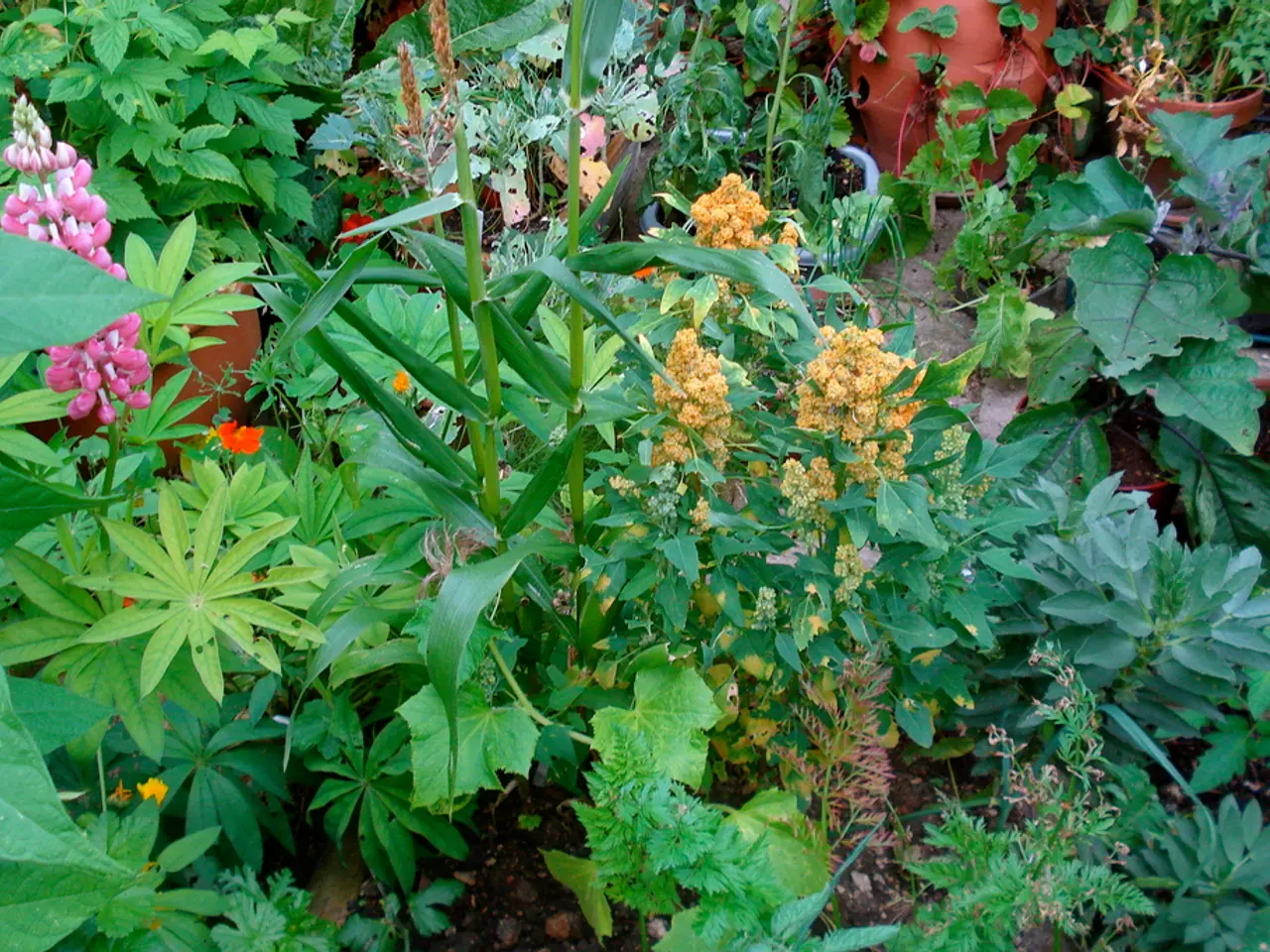Strategies and Insights for Efficiently Arranging a Vegetable-Raising Greenhouse Setup
Planning a Thriving Greenhouse Garden
Greenhouses offer a unique opportunity to extend the growing season and cultivate a wide variety of plants, from tropical delights like figs and lemons to cold-hardy peas. To make the most of this valuable real estate, here are some tips and ideas for planning and maintaining a thriving greenhouse garden.
1. Create a Planting Plan and Calendar
A well-thought-out planting plan and calendar is essential for managing growth cycles and making the most of succession planting. Succession planting ensures continuous harvest by timing new plantings as others mature.
2. Embrace Companion Planting
Companion planting can help reduce pests and improve plant growth. Pair plants like marigolds with lettuce or spring onions to deter pests, or basil with tomatoes to confuse common pests. Additionally, consider planting nectar-rich flowers inside or near the greenhouse to attract pollinators, which support fruiting crops such as cucumbers or melons.
3. Maximize Space with Vertical Growing
Maximize your greenhouse's space by using vertical growing techniques such as trellises, cages, and shelves. This allows plants like peas, pole beans, and indeterminate tomatoes to grow upward, increasing airflow and yield per square foot while freeing ground space for other crops.
4. Explore Container Gardening
Container gardening offers flexibility and soil control. Use pots and raised beds with well-balanced potting mixes, and rotate crops or refresh soil each season to maintain plant health and prevent disease buildup in your greenhouse environment.
5. Consider Hydroponic Gardening
Hydroponic gardening is an excellent option for a greenhouse garden, especially for a greenhouse without soil. Start with hydroponic trays and learn to manage nutrient solutions carefully to grow robust plants from seed to harvest. Vertical tower gardens, Kratky method buckets, and NFT systems are some hydroponic techniques to make the most of greenhouse real estate.
Remember to use sterile soil and seed-starting containers to prevent disease, collect rainwater or filter tap water to provide clean water to plants, and start small, especially if new to greenhouse gardening, to ensure manageable success.
By following these tips, you can create a sustainable, space-efficient, and productive greenhouse garden, providing fresh produce and beautiful flowers throughout the year. Happy gardening!
1. In cold climates, hydroponics could be a beneficial alternative for a soil-less greenhouse.2. A geodome or a well-insulated greenhouse could be ideal for hydroponic planting, extending the growing season even further.3. Seeds for hydroponic gardening can be started indoors during winter months, preparing for a spring or summer harvest.4. Home-and-garden stores often sell starter hydroponic kits, making it accessible for novice gardeners to try this lifestyle.5. Growing alongside traditional soil-based greenhouse gardens, a hydroponic section could diversify the overall greenhouse lifestyle.6. Harvesting fruits and vegetables throughout the year from a greenhouse garden, whether hydroponic or soil-based, can contribute to a healthier and more self-sustainable lifestyle.




